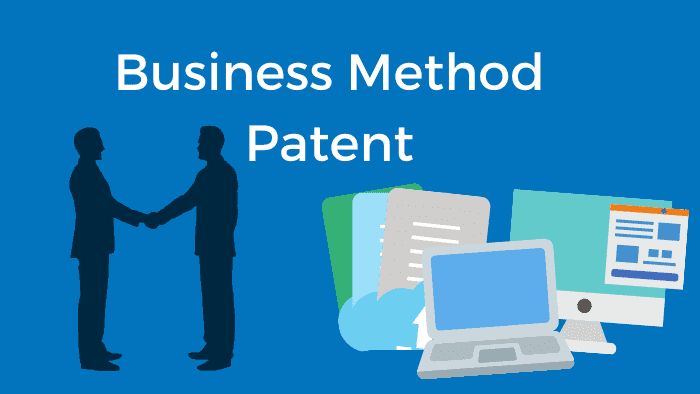Your business method often starts with an idea. This idea is a materialized process that often blends software automation with more traditional business methodology. Ergo, your business method is an organized body of ideas; your business identity that brings about a useful and significant product in the economic aspect.
Just imagine this: in terms of competition, you are an outstanding business entity thanks to your solid and effective business method. However, little did you know that another business would eventually outrank you, claiming to have the exact same business method.
You insist on securing a valid claim for this method yet you have no legal document proving that it has been registered for a patent to you. Would you surrender your last card, or would you still fight till the end?
Fear not; let’s cut the drama. We can help you establish a worthy fight that ultimately guarantees your victory. This article is your Ultimate Guide on Business Method Patents.
What is a Business Method?
The law defines a business method as “a method of operating an aspect of economic enterprise”. It begins with an idea and ends with a process. It often combines technology advancements with a more traditional business methodology.
Your business method serves as your blueprint to successful, sustainable entrepreneurship. Therefore, you need to protect it. You can do this by filing a patent application for you to be guaranteed legal rights and valid claims to said method.
Business methods are common in e-commerce as well as traditional businesses. They include the following:
- Targeted advertising networks
- Portal websites
- Subscription-based access to information
- Forums
- Online shopping processes
- Online auction bidding systems
- Financial data processing
- Content filtering
What is a Patent?
The law defines a patent as “the grant of a property right to the inventor for an invention to be protected.” It is an exclusive right of an inventor that enables him to manufacture, sell, or use an invention for a certain number of years. By granting the inventor’s exclusivity to a specific invention, a patent also puts others attempting to pursue a valid claim at a severe disadvantage.
(Related: What is a Patent?)
Most likely, issues on valid claims arise when two similar inventions are alike. This is why it’s so important to file a patent application at the USPTO (the United States Patent and Trademark Office) as soon as possible. A patent gives you an advantage when dealing with the highly competitive aspect of business.
Why Do You Need To Get a Patent?

Let’s be frank; the patent application will always be costly—and quite tedious.
During the period for a patent application, you need to (1) present clear and convincing reasons why you deserve patent protection, (2) monitor the market in the jurisdictions you have patent rights to watch out for potential infringers, and (3) maintain your patent registration.
As time goes by, you will also need patent enforceability as provided by the federal government. If your patent expires, you have no option but to abandon your application.
But there is a catch! The advantage of getting a patent is relative to long-term goals. When you are granted patent protection, you’ll have exclusive rights and advantages against valid claims.
(Related: Top 3 Advantages and Disadvantages of Patent)
Advantages of Patent Application
Exclusive Rights
The first and major advantage of a patent is that it grants the inventor exclusive rights to make, use, sell, and import the successful patented invention. This means that any third party, who may validly claim for a patent opposition, has no right to:
- make similar inventions out of the patented invention
- use in a tangible and even partial infringement
- sell the patented invention for personal gain
- import the patent invention beyond US jurisdiction
Sparks Innovation in the Public
The second advantage of a patent is that it invites aspiring inventors to create and innovate more designs. There is no need to copy the same blueprint of prior inventions. Rather, to spark innovation is an advantage in increasing the potential creativity of an inventor through newer designs.
Easily Commercialized
The third advantage of a patent is that it gives your invention a tangible, inheritable, and transactional asset. This amounts to determining the value of the patented invention based on objective and fixed criteria.
In other words, if your patent application is granted, you can either get royalties through a licensed use of your invention or file an opposition against a third party.
Where Can I Find Legal Assistance for My Patent Application?
Bold Patents prides itself on being one of the leading patent firms in the country. We specialize in patents and providing business advice.
- 1-1 Counseling: Knowledgeable, licensed, registered patent attorneys communicating with you directly throughout the process.
- Geographically Diverse: With our virtual network of patent attorneys, we have a physical presence and foundation in most major cities across the country.
- Unmatched Convenience: Instead of driving downtown and making you wait in line, we utilize online methods of communication so you can go through the whole process from the safety and convenience of your own home
- Transparent Pricing: With our flat-rates and clear fee schedules, there is no guesswork and no surprise monthly bills
- Lean Patent Service: We’re lean and mean. Our patent attorneys are all industry-experienced and have the scientific training to get to know you—and your invention—quickly and efficiently
- Broad Bold Network: We rely on our internal team for almost everything. But when special situations arise, we have a broad network of contract and counsel attorneys to help our clients with whatever they need
Let’s have a conversation! Click here to book a free consultation today!
What is a Business Method Patent?
A business method patent is a type of utility patent that protects the framework of a business process rather than its physical material.
In today’s technological advancements, software innovations are now being employed to integrate a business system.
Authoritative control from the business owner is needed to preserve the life of a patent. With guaranteed patent protection, a business method patent prevents other companies from either (1) using the same process, or (2) using the same process without first obtaining a license for a specific fee.
Indeed, a business method is a process. However, the law requires that a business method must qualify for the “machine-or-transformation test,” for it to be considered as such.
What does this mean? It implies that the process must either be linked to a specific machine/apparatus, or transformed into a different state/thing. An examiner uses this test to differentiate business methods from abstract ideas and grant the patent accordingly.

For example, consider an anti-fraud ATM. This is an example of a patentable business method. The ATM is a machine that processes transactions and uses integrated software to send a security code to the customer for verification purposes.
What are the Requisites for a Business Method Patent?

As mentioned earlier, your business method starts with an idea or an invention. However, an idea cannot stand alone. According to the USPTO, an idea or concept should meet and possess four statutory requisites:
I. Your invention must comply with the statutory eligibility
Subject Matter Eligibility benches a major reconsideration for an examiner whether your idea or concept is patentable. If you fail to qualify in this part, your patent application will be dismissed even if you meet the other statutory requirements.
The USPTO provides two major tests:
- An invention or idea should fall under one of the four statutory categories
- The claimed invention must qualify as a patent-eligible subject matter
The law under the Patent Act clearly states that processes, machines, articles of manufactures, and compositions of matter are patentable.
The USPTO defines “process” as “actions” or “inventions” that consist of a series of steps or acts to be performed. It is a process, art, or method, and includes a new use of a known process, manufacture, composition of matter, or material. The rest, “machines”, “manufactures”, and “composition of matter” are defined as “things” or “products.”
- Process. The law provides a “process” as a mode of treatment of certain materials to produce a given result. It is an act, or a series of acts, performed upon the subject matter to be transformed and reduced to a different state or thing. Take note that a process involves a certain period of time. It needs to have a specific result with the goal of transforming or reducing the prior idea to a different state or thing. Therefore, your business method should be a process that functions to transform with technology.
- Machine. The law defines a “machine” as a concrete, empirical object. It is the part and parcel of every device that structurally functions on its own. If a process is the recipe, the machine is the oven. Suffice to say, a machine is the sum of various physical parts that carry out your business method process. Examples of a machine would be a clock or an engine.
- Manufacturer. The law describes a “manufacturer” as a patent designation to an article produced or prepared by given materials, whether by hand labor, or by machinery, new forms, qualities, properties, or combinations. Here, patent designation consists of raw materials. A clear example of a “manufacturer” would be producing a new type of production of materials for retail packaging. Say an inventor needs to combine the raw materials of polymer and silica with dioxin. As a result, it transforms plastic and quartz. Thus, everything that produces unique physical properties when combined qualifies as a “manufacturer.”
- Composition of Matter. The law construes a “composition” as two or more substances and all composite articles, whether they be the results of chemical union or a mechanical mixture, or whether they are gases, fluids, powders, or solids. Examples of compositions are man-made proteins and pharmaceuticals.
While your manufacturer aims to give new properties as a by-product of combining two materials, the composition of matter only limits in forming a chemical union, binding one or more substances for internal performance.
Any of the four types of inventions that can only be subject to the patent. Hence, if your idea or concept doesn’t fall to any inventions mentioned, then your patent application will be dismissed. Nevertheless, the known ideas are abstract, and reciting the use of a conventional computer in the claims to implement the known idea does not make the claim patentable subject matter. [citing Alice Corp. vs. CLS Bank International, 2354, 110 USPQ2d at 1980]
Secondly, the claimed invention must qualify as patent-eligible subject matter. This means that an invention or idea should qualify the first test without any direct judicial exceptions provided by the court.
Here, the court provides judicial exceptions only which allow inventions or ideas found to be outside of, or exceptions to, the four statutory categories of inventions, and are limited to abstract ideas, laws of nature and natural phenomena (including the products of nature). [citing Mayo Corp. vs. Prometheus, 566 U.S. 66 (2012)]
II. Your invention must be novel
The law specifically provides that inventions cannot be patented if certain public disclosures have been made. In short, your inventions or ideas should be as good as new in the face of the public.
USPTO provides you with three general rules for knowing whether your inventions can be considered “new” or not:
- The invention was known to the public before the applicant filed for patent protection
- The invention was described in a printed publication before the applicant filed for patent protection
- The invention was described in a published patent application or issued patent that was filed before the applicant filed for patent protection
However, there is an underlying exception. The law provides the inventor with a one year grace period to file for patent protection on his/her new invention after the first public exposure. If they fail to file patent protection within the given grace period, then they are barred for their valid claims.
III. Your invention must be useful
Of course, your invention must be something that your clients can benefit from. Here, the law specifically states that the purpose of your invention must be useful. In the context of practicality, this requirement can be easily met with regards to technological advancements, such as business methods.
(Related: Business Methods | USPTO)
IV. Your invention must be non-obvious
As a general rule, non-obviousness must come before the novelty of an invention. So, what is a non-obvious characteristic?
For this last requisite, your examiner will check if your proposed invention has similarities with prior inventions. If an examiner finds your invention to have obvious similarities with the latter, then your chance of patent admission is very low.
Otherwise, if the comparison results in having no difference, then you have a greater chance of patent admission.
Examiners will normally review previous patent documents to find those and published patent applications that are closest to the characteristics of the invention.
Again, your business method can only qualify for patent protection when it is subject to (1) eligible, (2) novel, (3) useful, and (4) non-obvious.
Is My Idea Patentable?
The common question that a patent lawyer usually receives is, “Is an idea patentable?”
The answer is no.
(Related: 10 Tips for Inventors: Meeting with a Patent Attorney)
A Person of Ordinary Skill in The Art (POSITA) is an inventor who creates the blueprint of an idea or invention. In other words, you are the POSITA. You can only bring an idea to life and enable it.
(Related: How to Invent Something in 10 Steps)
The patent application has to describe a concept in such detail that a POSITA would be able to read it, recognize what’s written there, and know what the invented steps are in order to recreate or innovate again.
How do I Create a Business Method Patent?
Your business method should have a realistic and practical application. Always bear in mind that your idea or concept cannot stand on its own. Therefore, your method patent should be a tangible, concrete, and useful product.
In filing for patent protection, you need to secure a document that articulates and identifies the description of your invention. Your method patent should satisfy the statutory requirements under the Patent Law.
(Related link: How to Patent an Idea)
Today, the US Patent Law requires a business method to advance as a well-known business method process using computer software or the Internet. That is to say, technical details are required. If your business method is neither associated nor linked to any technological advancements, hardware, or equipment, then it is not qualified for patent eligibility.
To guide you more in linking your business method to an integrated computer software, here are the following steps you should take note:
- Evaluate your idea and create a method that implies its practical, beneficial and necessary aspects. In your business method, you need to identify its goals and how it can be achieved using a flow chart. Do not limit your ends. Tailor all possible perspectives.
- Gather as much technical information as you can. After you have outlined the details, you need to make sure you know how the central computer works in tangent with your business method.
- Provide a general overview of the entire system used to fulfill the method. You should also define the relationship of your central control to all other components/elements which frame your business method.
- Add a description of the specialized software. You should characterize the systematic relationship of your business method to its central control.
- Lastly, you need to disclose your software code where you can help to convey your method patent’s core functionality.
Where Can I File My Business Method Patent?
The United States Patent and Trademark Office (USPTO) is the federal government agency that provides legal and authoritative assistance for securing the inventions of individuals and businesses specifically on patents and trademarks.
To file your business method patent, you must first meet and comply with the four statutory requirements provided by the law (stated earlier): the invention must be (1) subject matter eligible, (2) novel, (3) useful, and (4) non-obvious.
If any of these requirements are unfulfilled, then you have a lesser chance of obtaining patent protection.
Pro-tip: For you to advance in your business method patent application, you need to link your method patent to software applications. This software application must present a clear and brief description of how it works together with the process of your method patent. Essentially, your method patent should aim for a useful, tangible purpose.
When Should I File My Business Method Patent?
After the first public exposure of your invention, the law provides a one year grace period for you to file for patent protection. If you fail to file patent protection within the given grace period, then you are barred for your valid claims.
As a general rule, as soon as possible after your invention is complete, you need to file your business method patent application with USPTO. As soon as you have passed the application, then the examiner would consider you as the first inventor.
(Related: How Long Does It Take to Get a Patent)
Now, as the examiner considers you as the first inventor, you’re given the right to label your invention as “patent pending.” Here, if and only if, a potential inventor has a similar invention as yours, then the examiner puts a potential infringer on notice. Nevertheless, if the patent is granted, you may seek royalty payments from the third party inventor who made or used the invention during the “pending” period.
What Steps Should I Take to File a Business Method Patent?
First, you must fulfill the utility patent application. Since the business method patent is under Utility Patent, you need to include:
- The clear description of the method you have invented.
- How your invented method mutually interacts with the technology or equipment.
- The software involved.

As per your software, you can only have it copyrighted.
Second, as you have fulfilled the patent application, an examiner will review the details that you have provided. Generally, the set of questions asked are related to your business method and the current software it involves. In some instances, the examiner may ask questions that need a quick response.
(Related: How to Write & Submit a Patent Application)
Lastly, after you’ve surpassed the reviewing stage, you need to wait for two to three years from the date of filing to record for you to get the business method patent. Here, you should be guaranteed a patent lawyer to maintain and handle all of your legal documents.
How Much Does It Cost To File A Business Method Patent?
It really depends on the costs. To start, you can find a listing of USPTO prices for filing here. They provide different prices based on your entity size (keep reading for more information on the differences in entity sizes and how you can save money).
If your application covers the subject matter of the patent, the complexity of the examination process, and a lawyer’s fees are involved, you would normally expect to pay between $3,000 and $15,000 to acquire a business method patent.
(Related: How Much Does a Patent Cost)
If the USPTO issues the patent, the owner pays maintenance fees for the patent pending. Most probably, it takes 3.5 to 11.5 years.
If the patent is challenged by a third party, it will cost a little more as you will need to litigate against the challenger.
Since your business method patent is under Utility Patent, you can directly go right to the non-provisional patent application. As per 2019, the latest cost of a utility patent application is $300, with the cost for a small entity at $150 and a micro-entity at $75.
Key Takeaways
Patent protection guarantees legal rights and valid claims on your business method. Your business method serves as your blueprint. Hence it needs to be preserved for an established and sustainable business.
Always look for the long term goals, no matter how tedious patent application is. Bear in mind that once your patent application is granted, you have the full and exclusive rights against a third party who might make, use, sell or import your patent invention.
Your business method should have a realistic and practical application. Remember, your idea or concept cannot stand on its own. Therefore, your method patent should be a tangible, concrete and useful product.
Your examiner expects that you must have met and complied with the four statutory requirements provided by the USPTO. Your invention must be subject matter eligible, novel, useful, and non-obvious. If any of which is missing, then you have a lesser chance to get patent protection.
So, fear no business and cut any drama. We will help you to make a worthy fight and never surrender your last card. At Bold Patents, we deliver patents for market-ready inventions, perform due diligence in patent research to help clients make better business decisions, and proactively engage with key industry partners for our client’s success.
Do you have a finished invention? Book for a free consultation. Contact us now!

